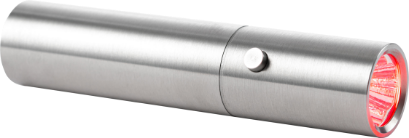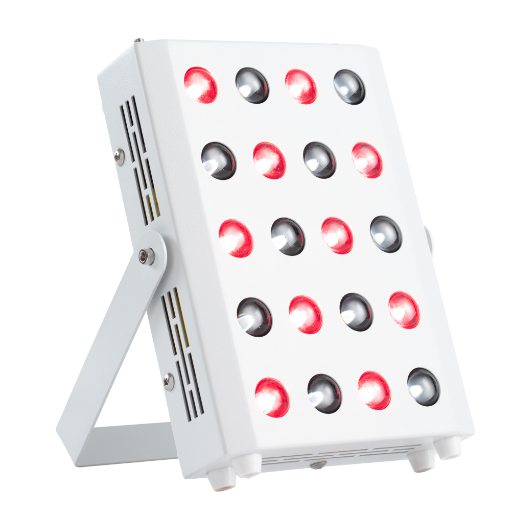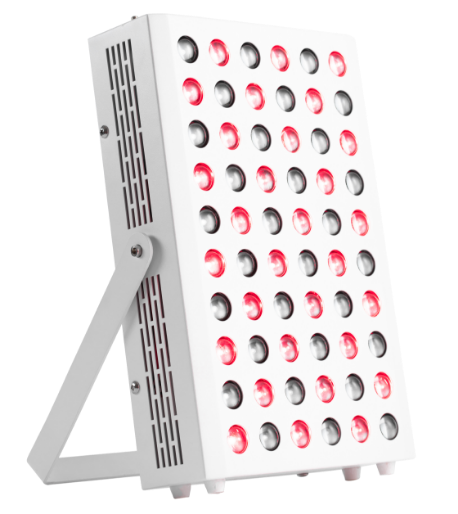Generally speaking, people are at their healthiest when their cells are in balance with each other, and their bodies are making and using the energy they create efficiently. One of the ways that people can stay balanced and healthy is by following the body’s natural cycles (also known as Circadian Rhythms).
The word for “circadian” comes from the Latin ‘circa’, meaning “around” and ‘diem’, meaning “a day”. What’s amazing is that circadian rhythms are found in virtually every living organism – no matter their size, location or age.
Although most circadian rhythms are associated with the sleep/wake cycle of the body, there are also important circadian rhythms for digestion, absorption, metabolism, exercise and fat-burning that can affect one’s health and lifestyle.
In this article, we will explore in a bit more detail exactly what circadian rhythms and cycles are, and why they’re so important for health & function. We’ll also discuss the importance of red light therapy, and how localized treatments using red light devices can help to support healthy circadian rhythms.
What is a Circadian Rhythm?
A circadian rhythm describes a natural bodily process that everyone experiences once every 24 hours. They are cycles which complete and restart everyday such as; the sleep-wake cycle, the body-temperature cycle, and the cycles in which a number of hormones are secreted. What many people do not know is that not only are circadian rhythms tied to the earth’s rotation and light/dark cycle, but they are also encoded into our genetic makeup, as well as other organisms on our planet.
Here are some examples of circadian rhythms:
1) Humans are naturally diurnal animals, which means we wake up in the day and sleep at night. It’s similar to other creatures such as mice, which are designed to be nocturnal animals and have the complete opposite sleep-cycle to us.
2) Our digestive system is another example of a circadian rhythm as they cannot create and burn fat at the same time, so our cells alternate. So when we’re awake and eating food and taking in calories, our digestive system breaks down the food we consume to create stored fat. Then in turn, when we sleep, our stored fat keeps our bodies fueled throughout the night.
This is why when you go against your natural rhythms, you can harbor negative effects on the body such as metabolic slowdowns and sleep disturbances. It doesn’t stop there – these systemic effects then can affect your hormone production, ability to recover from injuries and overcome inflammation. It goes without saying – if you are not following a healthy circadian rhythm, you will end up performing less efficiently across the board.
3 of the Body’s Core Circadian Rhythms
We recommend that you check out Satchin Panda’s comprehensive book ‘The Circadian Code’ which shares the secrets of circadian rhythms and how it doesn’t just affect your sleep, but every aspect of your life and wellbeing.
As described in his book, we will summarise the 3 core circadian rhythms within the body to shed some light into how to improve your overall well being.
- Circadian Rhythm and Restful Sleep
If you’ve ever experienced a bad night’s sleep then you will probably attest to not feeling great the next day. This is because our bodies always work best when we’re getting the right amount of sleep each day. But even if you’re getting 7-8 hours, you may not be aligned with your body’s optimal sleep cycle.
During the day, light exposure causes our bodies to send signals that generate alertness and help keep us awake and active. As night falls, our bodies initiate the production of melatonin, a hormone that promotes sleep, and then keeps transmitting signals that help us stay asleep through the night.
If you travel back to the past without any technology that sprouts artificial lighting, our bodies would have always naturally synced with the Earth’s day/night cycle (no matter the location). Fast forward to the present day and our bodies are still designed to work with an abundance of light during the day, and restful sleep when it’s dark at night. So even if you slept from 2am to 11am every day, theoretically you have had enough sleep, but the quality will most likely be poor. That’s why you still feel tired when having sporadic sleep patterns each night.
- Circadian Rhythm and Eating
Studies have shown that energy metabolism and appetite regulating hormones follow circadian rhythms which, when disrupted, could lead to damaging metabolic consequences. These issues are most commonly experienced by shift workers, due to nighttime wake, daytime sleep, and eating at night. However, this is not just restricted to shift workers; milder shifts in sleep and mealtimes and eating when experiencing jetlag are very common in the general population.
But why? Well, our key internal organs always work best when we align our eating with our circadian rhythms; especially when following a routine that allows your body to operate along the same patterns that are more efficient for your digestion, nutrient absorption, and overall metabolism. There are many studies to show how your meal timing regulates your circadian system. By having earlier meal timing, specific to an individual’s circadian rhythm, could serve to reduce cardiometabolic diseases and aid in weight loss.
Unfortunately, our cells are unable to store and break up body fat at the same time. So whenever we eat during the day, the fat producing mechanisms start working, and if we consume any fats outside of that window, we are essentially telling our bodies to back into a mode where it stores fat instead of burning it. So, like a cycle, if you only eat in the same 8 or 10 hour window every day, your digestive system can get into a better rhythm, burn more fat and help you to look and feel better.
- Circadian Rhythm, Exercise, and Recovery
Our bodies are automatically programmed to switch off and go into a night mode at night, this is obvious as our heart rate slows down, body temperature lowers and we enter a state of sleep. This means if you exercise after dark, your body has to work harder to make and use all that energy, which will have a detrimental effect on your sleep cycle and your body’s natural circadian rhythm of digesting food, ultimately making your athletic recovery / fat burning mechanisms less efficient.
How Does Light Affect our Circadian Rhythms?
As we explained above, our circadian rhythms have always been built around the sun and the Earth’s rotation cycle, which demonstrates the importance of light to our internal patterns and cycles.
The way light affects circadian rhythm depends on the timing of light exposure. For example, when light is perceived early in the morning, it pushes the sleep schedule earlier. Or, when light exposure is experienced in the evening, the sleep cycle is pushed backward toward a later bedtime.
Circadian effects vary based on the type of light and the duration of exposure. While prolonged light tends to be impactful, even short periods of artificial light can affect circadian rhythm.
The Effect of Light on Sleep Hormones
There are two main hormones that regulate the standard sleep-cycle, and they are both directly impacted by light.
- Cortisol – the hormone that helps wake us up and keep us going throughout the day. Studies have shown that cortisol levels are highest in the mornings and lowest when we are in a deep sleep.
- Melatonin – the hormone that helps you fall asleep at night and stay asleep. Your body typically produces melatonin as nighttime approaches, and studies have shown that bright blue light from devices (such as phones or TVs) can disrupt the production of this essential hormone, which ultimately makes it harder to sleep.
iRed Red Light Therapy for Circadian Rhythms
Red and NIR light from iRed’s range of devices harness a much lower color temperature than the blue lights you experience from TV’s or computers. This makes it very suitable for use at nighttime, and is very recommended for helping to follow a natural circadian sleep-wake cycle.
You can view the full range of iRed Red Light Therapy devices here, which are very affordable without compromising on quality.







